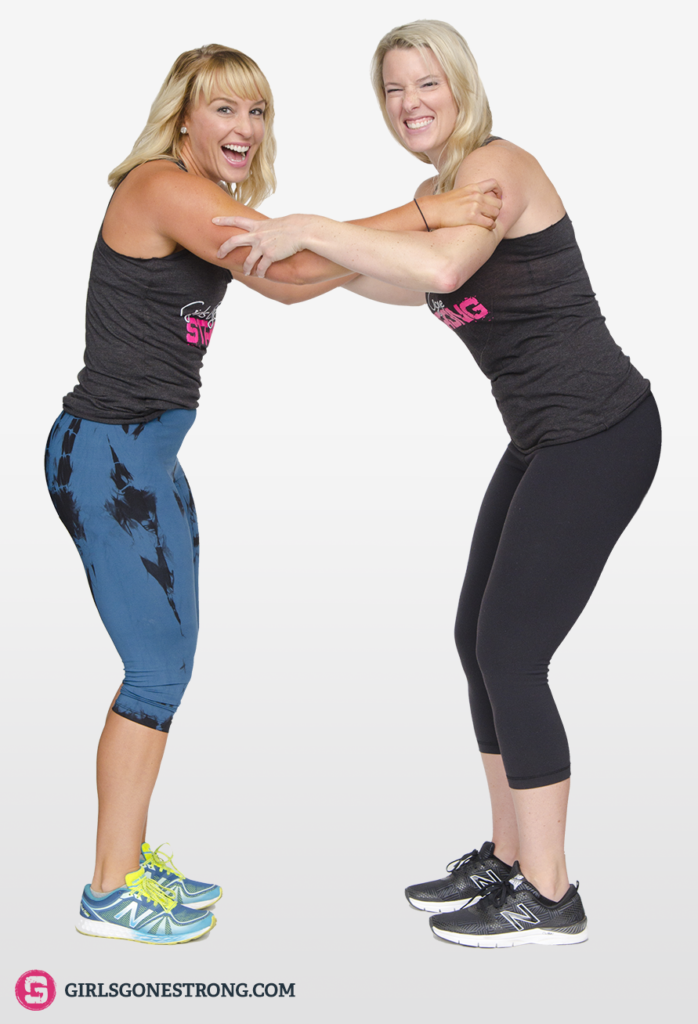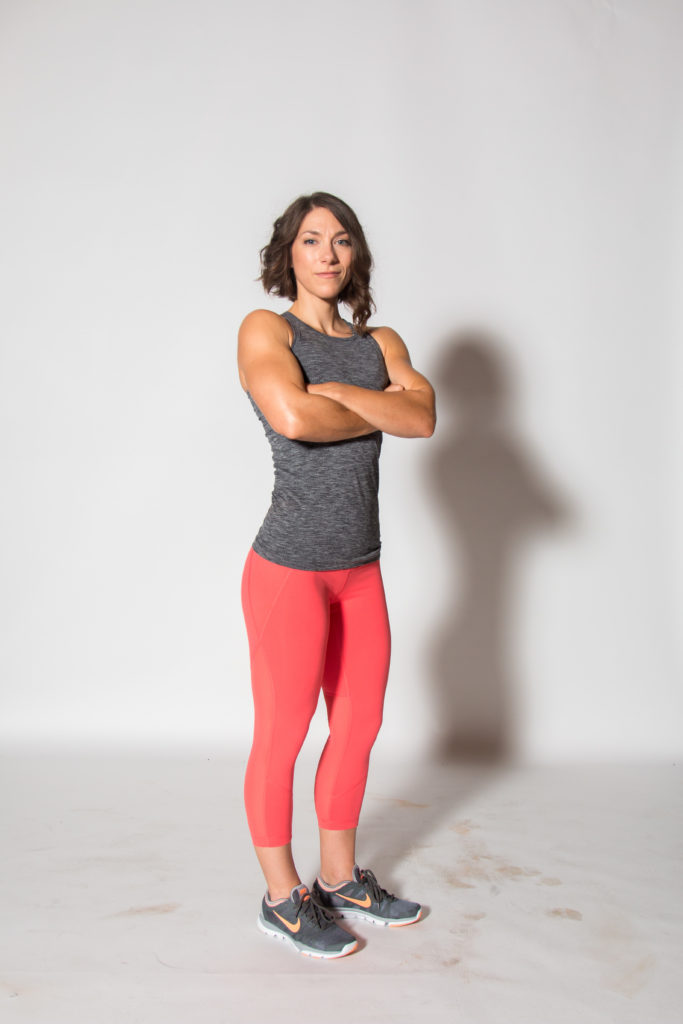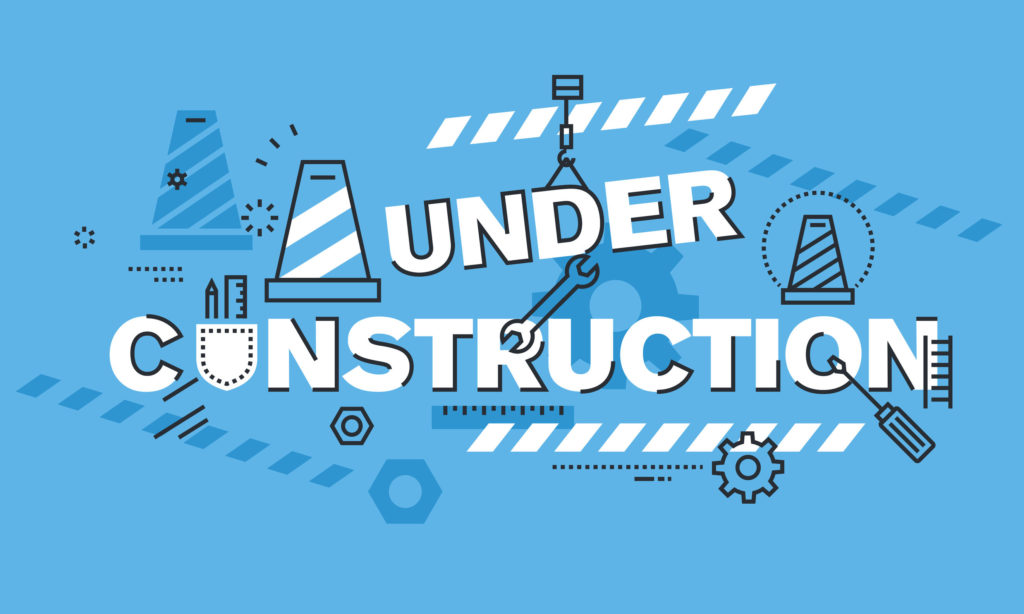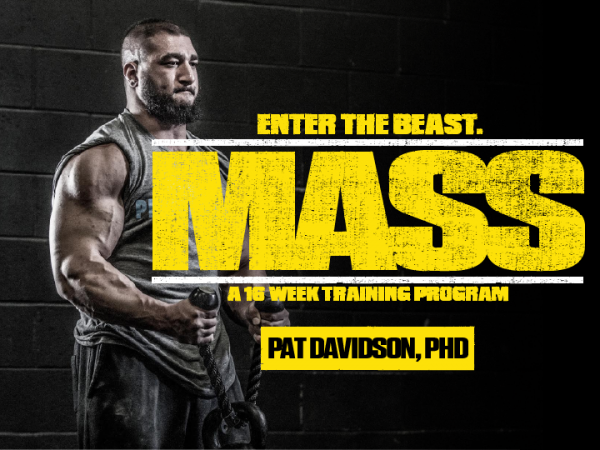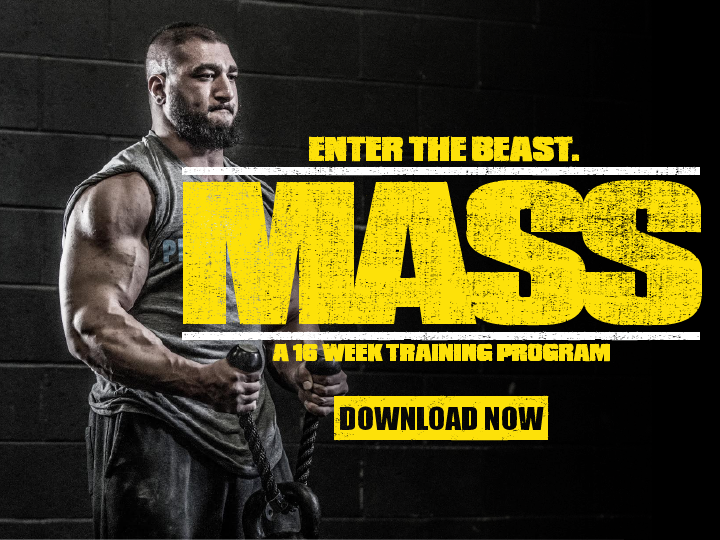Today’s guest post comes courtesy of strength and conditioning coach Kevin Finn.
It’s a doozy with tons of information related to how to add slabs of muscle to your frame in the most time efficient and scientifically backed way possible.
So, pretty much everyone will be interested in reading it.
Enjoy!

Step One: Optimize Your Training Split and Rep Ranges for Volume Accrual
First off, if you’re still doing a “bro split” and hitting your muscles once per week, you need to “get woke” as the kids say these days. It’s time to get out of the 90s and get that frequency up. Besides optimizing muscle protein synthesis rates over the course of the week, higher training frequencies allow you to accumulate more quality volume—both throughout the week and on a per session basis.
Consider this:
We know that 10 sets per muscle, per week is likely the minimum threshold for maximizing muscle gains, but there is also evidence that suggests there may be a per session cap on volume, beyond which, progress is actually impaired. One study, for example, showed that 10 sets of 10 (a popular protocol utilized in German Volume Training) offered no additional benefits when compared to 5 sets of 10. In fact, the group that only performed 5 sets had greater strength gains and slightly higher increases in lean body mass!
This is one of the reasons higher training frequencies are so beneficial. By upping your training frequency, you can still hit 10+ weekly sets per muscle while sidestepping that potential “per session cap” on volume.
With this in mind, utilize a split that allows you to hit each muscle a minimum of twice per week, and consider even higher frequencies for the upper body or for smaller muscle groups that recover well (calves, shoulders, arms).
Now that you’ve got your training frequency sorted out, you need to consider your rep ranges.
As you attempt to push volume, an issue that will invariably crop up is time. As much as I’d love to stay in the gym for 2+ hours, as a working dad, it’s simply not going to happen.
Some days I’m lucky to get an hour.
So, if time is going to be an issue, you should strongly consider ditching most of your lower rep strength work. In fact, if you’re trying to build muscle as your number one goal, you don’t have any business doing much work below the 5 rep range.
What? Blasphemy you say?
Well, there’s a couple facts to keep in mind when it comes to rep ranges:
1) Utilizing higher rep ranges is a much more time efficient way to accumulate volume: Higher reps allow you to perform more total volume as they require shorter rest periods, less warm-up, and they don’t beat your joints up like heavy loading does.
2) Even when sets are equated, moderate rep ranges (8-12) have been shown to produce more hypertrophy than high load sets in the 2-4 rep range.
If the goal is to build muscle and you’re seeking to push volume, stick to moderate and higher rep ranges. Keep the bulk of your training based around 6-15 reps, and don’t be afraid to play around with reps as high as 15-30 on some of your accessories.
As long as you come sufficiently close to failure, you’ll build just as much muscle and you’ll be able to accumulate a lot more volume in less time.
One more time-saving tip:
If you’re still having issues fitting in the amount of volume you need to progress, I suggest following a split that will allow for the pairing of antagonist muscle groups so you can perform antagonist paired sets (APS). By performing APS, you get the time saving benefits of supersetting without tanking your performance.
Here’s how they work:
Take two exercises that work opposing muscle groups—like a shoulder press and a pulldown.
Perform one set of shoulder presses, rest about a minute or so, and then do a set of pulldowns. Rest for another minute and then repeat until you’ve completed all your sets for both exercises.
If you typically rest 2-3 minutes between sets, this will save you quite a bit of time, since you will be utilizing a portion of your rest periods to perform another exercise.
And, unlike with supersets, your performance won’t suffer due to excessive fatigue; in fact, there’s even some research that suggests performance may be enhanced.
APS work best with movements that don’t inflict a lot of systemic fatigue, so don’t try these with squats or deadlifts.
Key Takeaways:
- Use higher training frequencies (2-4 times per week) to facilitate higher training volumes and increase the average quality of your per session volume.
- Do the majority of your work in the 6-30 rep range as this is the most efficient way to accumulate volume and is less likely to leave you beat up and burnt out.
- If time becomes an issue limiting your total volume, consider using protocols such as APS to get in extra volume without tanking performance.
Step Two: Be Flexible with Exercise Selection
Listen, if it takes you 40 minutes of warm-up, mobility work, and movement prep in order to get to your first working set of squats, we need to talk…
And if deadlifts tire you out so much you need 5-10 minutes between sets to recover, perhaps you need to consider a different approach…
Because the truth is, unless you’re a powerlifter, there’s no need to stay married to the big three, especially if hypertrophy is your main goal.
I love squats and deadlifts as much as the next guy, but these movements tend to be uniquely time-intensive and fatiguing. If you’re not careful, they can “crowd out” other movements that may give you more bang for your buck in terms of volume. Furthermore, some of us are simply not well-suited to these specific exercises and would do better with other movements.
Maybe hitting some heavy leg presses first and following that with some front squats and Romanian deadlifts would allow you to accumulate a lot more volume in a lot less time while still maintaining those same basic movement patterns?
Key Takeaways:
- Unless you’re a powerlifter, there’s no reason to stay married to the big 3.
- Do a “cost benefit analysis” on movements that cause a lot of fatigue or eat up a lot of your training time.
Step Three: Work Smarter, not Harder
There’s a fair amount of evidence showing you do not need to train to complete failure to grow your muscles. In fact, by avoiding failure altogether on most sets, you not only reduce the risk of injury, you also open up the possibility of performing more total volume. And more volume is generally associated with more hypertrophy.
Not a bad trade-off, right?
When attempting to maximize volume and recovery, the key is to come close enough to failure to maximize muscle fiber recruitment and adaptations without actually hitting failure—all while maintaining good form.
In general, the higher the intensity (in terms of percentage 1RM), the farther you can be from failure while still maximizing muscle fiber recruitment. Conversely, the lower the intensity, the closer you must come to failure.
Here’s a general rule of thumb I like to follow regarding average RPE ratings:
- <10 reps = RPE 6-8
- 10-15 reps = RPE 7-9
- 15-30+ reps = RPE 8-10
There will always be exceptions to the above of course, but this will get you in the right ballpark.
Key Takeaways:
- You don’t have to train to complete failure to achieve full muscle fiber recruitment.
- For lower rep sets you can leave quite a few reps left “in the tank” and still maximally recruit muscle fibers.
- For higher rep sets, you should come a little closer to failure.
- In managing your “per set fatigue” by avoiding failure, you will be able to perform more total volume in that session and throughout the week.
Step Four: Mitigate Muscle Damage
I came up as a young lifter thinking the goal of training was to tear down your muscles so they are rebuilt bigger and stronger than before (no pain, no gainz). This lead me to pursue protocols that focused disproportionately on muscle damage. I’d take pride in my levels of soreness and relish the pain–never mind the fact that my recovery and performance were compromised for the rest of the week and I was hobbling around like an old man…
Now I know better.
As more research comes out, it seems of the three proposed mechanisms for muscle growth (mechanical tension, metabolic stress, and muscle damage), muscle damage is likely the least important factor.
In fact, recent studies show excessive muscle damage can have a detrimental effect on your gains because your body must spend time and resources repairing the damage before it can begin to build new muscle
So the key is to allow for some muscle damage as a natural consequence of training hard and progressing, but not so much that your total weekly volume is compromised by impaired recovery and/or performance.
How do we do that?
One way is by taking advantage of the repeated bout effect.
The repeated bout effect is the phenomenon by which a single session, or bout, of a given exercise protects against muscle damage from future bouts. Put more simply, the more you perform an exercise, the more resistant to damage (and adaptation) the muscle becomes.
This is often viewed as a bad thing; after all, if the muscle becomes resistant to adaptation, doesn’t that make it harder to progress?
That may be true, but there’s another way to look at it…
Becoming more resistant to damage means your muscle are able to perform more volume with less damage per session. This is key because it can allow us to incrementally increase training volume to levels high enough to maximize hypertrophy while protecting against excessive muscle damage that will impair recovery and progress. One way I like to take advantage of this is by incorporating “intro weeks” into my training cycles.
When you first start a new training cycle, you’ve most likely changed quite a few variables—reps, progression schemes, exercises, etc.—and these changes will temporarily result in higher levels of muscle damage due to the novel stimuli.
By starting off with an intro week with slightly lower volume and intensity, you’ll still get a strong training effect and the easy dose of volume will inoculate you against the higher volumes and intensities coming down the line.
How low one should keep the training volume and intensity during an intro week will vary based on the individual, but I like to put the intro week somewhere in between a deload and an average “meat and potatoes” week of training. Think of it like a bridge between the two.
Another thing to consider in regard to mitigating muscle damage is exercise selection.
If deficit, stiff-legged deadlifts consistently leave you so sore you’re crippled for a week, you’re not doing yourself any favors by maxing out on them on the regular. Sure it feels like you’ve accomplished something (gotta sacrifice to win, brother), but it’s a short-sighted approach.
Don’t get me wrong, being sore is not a bad thing per se. And I think it’s good to include a few movements that load a muscle in a stretched position—especially if hypertrophy is the goal, but you need to do a cost-benefit analysis with these types of movements.
You may not need to give them up entirely, but tweaking the volume, rep range, and proximity to failure can help attenuate some of the excessive damage while still allowing for the positive aspects of the movement.
Key Takeaways:
- Excessive muscle damage should not be the goal of training and may even negatively impact gains.
- Take advantage of the repeated bout effect’s ability to protect against muscle damage by using intro weeks and gradually increasing volume and intensity as the mesocycle progresses.
- Consider modifying the loading and progression schemes for particularly damaging exercises if excessive soreness is impairing recovery.
Step Five: Include Overreaching Weeks and Deloads
Just as you are most sensitive to volume at the beginning of a mesocycle, you are most resistant to volume toward the end. Thus, the natural counterpart to an intro-week at the beginning of your mesocycle, is an overreaching week to close it out.
An overreaching week is a week where you intentionally push volume a little higher than normal in an effort to maximize potential progress. When done in an intelligent manner, this can be an extremely productive and fun week of training. During this week you can go for slightly more damaging protocols, push a bit closer to failure, and/or up the volume to a level higher than you could normally sustain.
Immediately following an overreaching week, you should perform a deload week. The two go hand-in-hand.
A deload is more than just a preventative measure to protect against injury, it’s the second half of a “one-two punch” that allows you to expose your muscles to higher levels of volume by providing a window for recovery.
During a deload, you should reduce volume and both intensity of load and intensity of effort to allow for active recovery to occur. Without the recovery period, you would not be able to peak volume as high and your muscles would not have been exposed to those superlative levels of stress.
The higher the peaks, the lower the valleys.
Overreaching strategies:
While I consider deloads a mandatory part of a good training program, overreaching weeks are more of an optional piece. For some lifters (particularly those who tend to run themselves into the ground), any small benefits that may arise from the overreach could easily be outweighed by the increased risk of injury or burnout.
Thus, it’s important to remember an overreach is not an excuse to get sloppy with form or drastically change things up.
If hypertrophy is the main goal, you are primarily just looking to get some extra volume in and perhaps vary the training stimulus a bit. One method of doing this is to add a drop set or two to your last movement for a muscle group in a given session.
Research has shown that drop sets can be just as effective as straight sets. And because they are so time efficient, it’s easy to tack them onto your workouts without a huge time investment.
Thus, drop sets can add a nice little punch of volume without making your workout significantly longer, and we’re not so concerned with the fatigue because the deload in the following week will ensure recovery is adequate.
Key Takeaways:
- Pushing a bit harder towards the end of a mesocycle can be a valuable strategy to potentially eke out some additional progress.
- You must pair an overreach with a deload to allow the higher levels of fatigue to dissipate and any potential supercompensation to occur.
- Regardless of whether you utilize overreaching strategies, regular deloads should be incorporated in your training.
- Drop sets can be a very time efficient way to add some quality volume during an overreach.
Parting Thoughts and a Word to the Wise
You’ll note I didn’t include a sample training program with this article. This was intentional. I’ve instead chosen to outline some “broad strokes” concepts so that you can use these principles to improve on your programming now and for years to come.
By following the steps outlined above, you may find you now have the potential to double your training volume.
But just because you can, doesn’t mean you should.
Let’s say you’ve been doing around 10-12 sets per muscle group, per week on average. You’re training hard, eating well, and feel well-recovered between sessions, but you’ve hit a plateau. It’s very likely that you’ll benefit from bumping up your training volume. It’s the most logical next step. By using the strategies outlined above, you may find you are now able to fit in 20 quality sets per week.
Don’t jump straight to 20.
Just as you should progress incrementally when adding weight to the bar, you should view volume in the same way. So rather than doubling your volume right off the bat, simply add about 10% or so and see how you fare.
Did you progress? Was recovery okay?
If so, run it again. If it ain’t broke, don’t fix it.
Milk as much progress as you can out of your current level of volume, but keep an eye towards progressively and incrementally adding volume—both to test your limits and to keep those adaptations rolling. Your ideal volume is a moving target, but if you are paying attention to your training, tracking variables, and keeping your eyes on the prize, it’s a target you should be able to hit fairly consistently.
It doesn’t have to be a bullseye.
About the Author

Kevin Finn is a strength and conditioning specialist, online trainer, and the owner and creator of FitnessWalkthrough.com.
As a coach with a master’s degree in education, he specializes in breaking down complex information and arming people with the knowledge and tools necessary to transform their physiques and take their performance to the next level.
He has created some of the most comprehensive guides available online for skinny guys and girls who struggle to build muscle. Visit http://fitnesswalkthrough.com/get-jacked.html to get a free copy and learn more.




